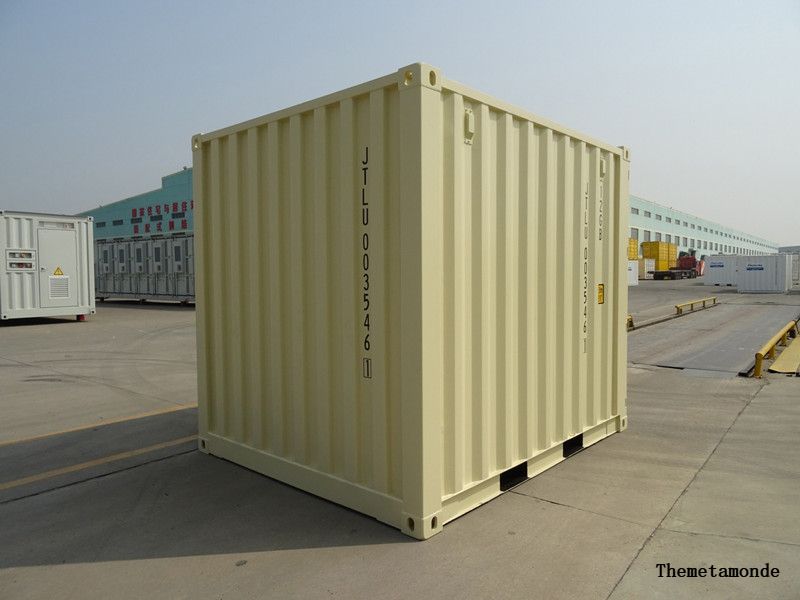Views: 0 Author: Site Editor Publish Time: 2025-03-21 Origin: Site








Discover how refrigerated containers maintain temperature control for sensitive goods during transport. Learn about key components and the cooling process.
Ever wondered how refrigerated containers keep your food, medicine, or other sensitive goods safe during long journeys? These containers, also known as reefers, play a crucial role in cold chain logistics, ensuring goods stay fresh and intact.
In this post, we’ll explain how refrigerated containers work, their cooling systems, and share best practices for using them effectively. You’ll also learn about the key components and how they maintain precise temperatures during transit.

![]()
Refrigerated containers, or reefers, are specially designed for transporting temperature-sensitive goods. These containers maintain the right temperature, whether freezing or chilling, to prevent spoilage.
Reefers are used across various industries:
● Food: To transport perishable items like meat, dairy, fruits, and vegetables.
● Pharmaceuticals: To keep medications, vaccines, and other medical supplies at precise temperatures.
● Electronics: Some electronics need to be kept at specific temperatures to avoid damage.
Reefers help preserve product quality during long transport. They prevent spoilage, decay, and maintain freshness, ensuring goods reach their destination in perfect condition.
Refrigerated containers operate through a cooling system that keeps the inside temperature at a specific level, ensuring cargo stays fresh.
The refrigeration unit is the heart of the reefer. It uses a compressor to circulate refrigerant, removing heat from the inside.
The compressor compresses the refrigerant gas, turning it into a high-pressure state. This gas then circulates through the system to absorb heat.
Once the refrigerant is circulated through the evaporator coil, it absorbs the heat, cooling the air inside. This process ensures the container stays at the desired temperature.
This cooling system helps maintain temperatures in the desired range, such as -20°F to 75°F (-29°C to 24°C), ensuring that products like food and medicines remain at their ideal temperatures.
Refrigerated containers can be set to various temperatures. Typically, they operate between -20°F to 75°F (-29°C to 24°C), depending on the type of goods inside.
To maintain the set temperature, the refrigeration system continuously circulates cool air. Adjustments can be made based on the cargo's needs.
Modern refrigerated containers come with automatic systems, which adjust the temperature as needed. Older models may require manual adjustments to control the temperature settings.

Proper airflow is essential for evenly distributing cold air and ensuring all goods stay at the correct temperature. Without good airflow, certain areas of the container may become too warm, risking spoilage.
Convection and fans circulate air inside the container. Cold air moves through vents, flows around the cargo, and ensures the temperature remains consistent throughout.
Avoid overloading the container. When cargo is packed too tightly, it blocks airflow, which can lead to uneven cooling.
Ensure vents aren’t blocked by cargo. This allows for the free flow of air, maintaining temperature control.
Using pallets and spacers helps maintain airflow. It ensures cold air circulates properly around the cargo, preventing temperature fluctuations.
A: Refrigerated containers use a refrigeration unit with a compressor and evaporator coils. The compressor circulates refrigerant gas, which absorbs heat from inside, keeping the container cool. Temperature control is maintained through automated or manual settings based on cargo needs.
A: Key components include the compressor, evaporator coils, condenser, fans, and temperature control unit. These work together to circulate cold air, maintain temperature, and ensure airflow inside the container.
A: Proper airflow ensures even cooling throughout the container. Without it, temperature inconsistencies can occur, risking spoilage. Loading goods correctly and not blocking vents helps maintain proper airflow.
A: Refrigerated containers typically require a 380-460V three-phase power supply. Backup generators or battery systems are used to ensure continuous cooling when no electricity is available.
The compressor is the engine of the refrigeration system, compressing refrigerant gas and circulating it through the system.
The coils are essential for absorbing heat from the container. As refrigerant passes through, it cools the air.
The condenser cools the refrigerant once it’s heated up by the process. This helps the refrigerant return to its liquid form.
Fans circulate the cold air throughout the container, ensuring a consistent temperature is maintained.
This unit allows users to monitor and adjust temperature, providing easy management of the container’s environment.
Special ventilation ports allow fresh air to enter and gases like CO2 to exit, important for certain goods like fruits.
Moisture buildup can lead to mold, bacteria, or product degradation. It's crucial to manage humidity levels to avoid this issue.
Ensure the container and pallets are dry before loading to prevent moisture buildup. Also, maintain humidity control for certain sensitive cargo.
If seals or gaskets aren’t intact, cool air can leak out, causing temperature instability.
Check seals and gaskets regularly to ensure the container maintains the correct temperature during transport.
Refrigerated containers typically need a 380-460V three-phase power supply. This ensures the cooling system works efficiently.
If there’s no access to electricity, generators or battery backups are used to keep the reefer running. This ensures uninterrupted cooling for sensitive cargo.

Maintaining refrigerated containers is crucial for keeping cargo at the correct temperature. Regular cleaning and checking temperature logs help prevent issues. Monitoring the refrigeration system ensures it runs efficiently. If a reefer isn’t maintaining temperature correctly, troubleshooting and prompt repair are necessary. Regular servicing will extend the life of your container and keep goods safe during transit.